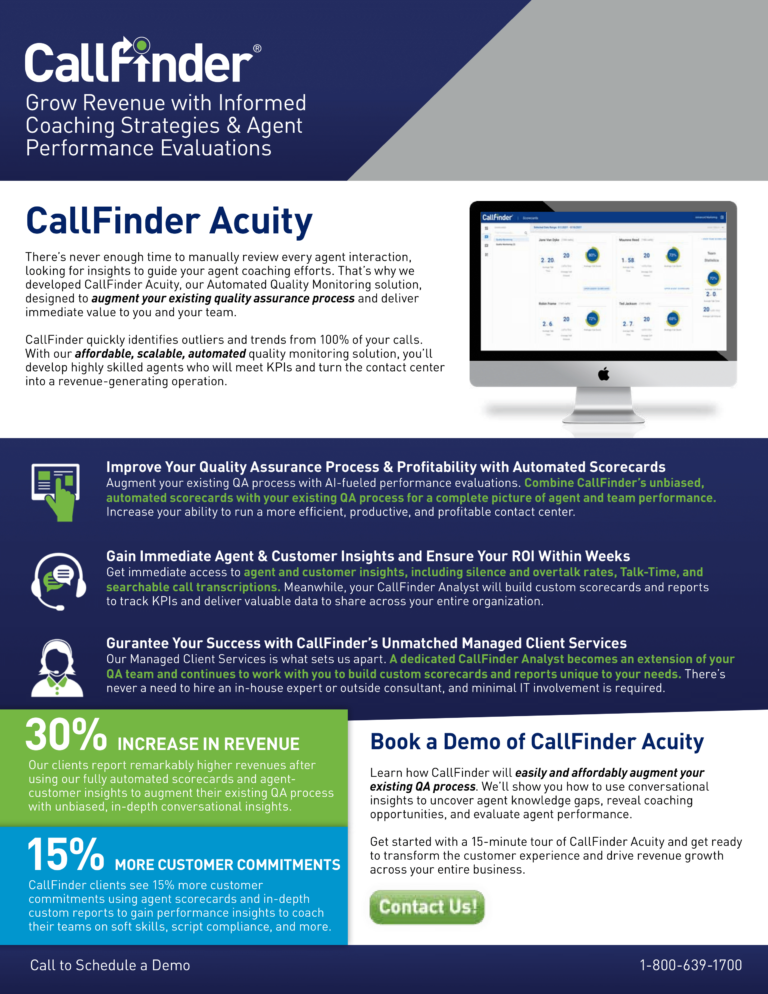The other day, we wrote an article on how to use script compliance measures to avoid publicly embarrassing mistakes for your company and your employees. This conjures up thoughts about the latest Comcast Cable debacle that has played out publicly, like a fast moving fire, through the use of social media.
While listening to the recorded conversation between Ryan Block and the Customer Retention specialist, it came to mind that while the agent was probably following a loose call script in order to attempt to retain the customer, he clearly had also been empowered with the ability to go off-script and tried using tactics to retain the customer, which failed miserably.
Mr. Block, by the way, deserves an award for his unwavering patience and grace shown throughout the call, as well as his support for the offending agent in the aftermath of their conversation.
While Comcast’s response was that the employee was following the training and coaching he had received, they have missed the mark on why scripts are used in the first place. We believe that scripts are used to provide an awesome customer experience, but not to control the conversation.
Why Call Scripts Are Useful For Customers, Not Just Agents
A well-crafted script can take a customer along an experiential journey. That is what all companies should aim for; delivering an exceptional customer experience, and training agents to do just that. And, this is where the importance of speech analytics technology comes in. Mining audio calls for agents that go off-script can uncover scenarios similar to this Comcast fiasco, which will provide the insights that a business needs in order to make course-corrections and improve agent call handling skills and performance.
The Influence of Agent Performance and Script Compliance on the Customer Experience
A well-known and widely criticized factor of the customer experience focuses on the non-human elements – which consist of wait times and cumbersome automated menu systems that customers must navigate before they can talk to a live person. But, there are many other human factors that influence a customer’s experience once they interact with a contact center agent, most of
which lie directly under the agent’s control:
• Attitude and tone of voice
• Knowledge of the product or service
• Conveyed understanding of the customer’s issue
• The ability to respond to and resolve the customer’s inquiries during the first interaction
To take this more in-depth look at agent performance, a company needs to have the right technology in place to efficiently and comprehensively monitor customer conversations, evaluate the “voice” of the customer, and accumulate the data necessary to analyze customer feedback. Once the technology is in place to monitor what is happening during customer conversations, measuring agent performance and making adjustments to coaching and training programs is easily in sight.
Capturing and Evaluating Agent Interactions With Audio Mining Technology
With agents’ conversations being one of an organization’s most valuable information sources, the decision to capture those conversations may seem relatively simple on first consideration. The next steps however are altogether different, and companies justifiably find themselves confronted with the enormous undertaking to extract that information, analyze it, take action, and make improvements based on the findings.
Learn more about speech analytics for use in the contact center environment by speaking with a CallFinder specialist, and taking a short online demo of our cloud-based call recording and audio mining solution. Cheers!










